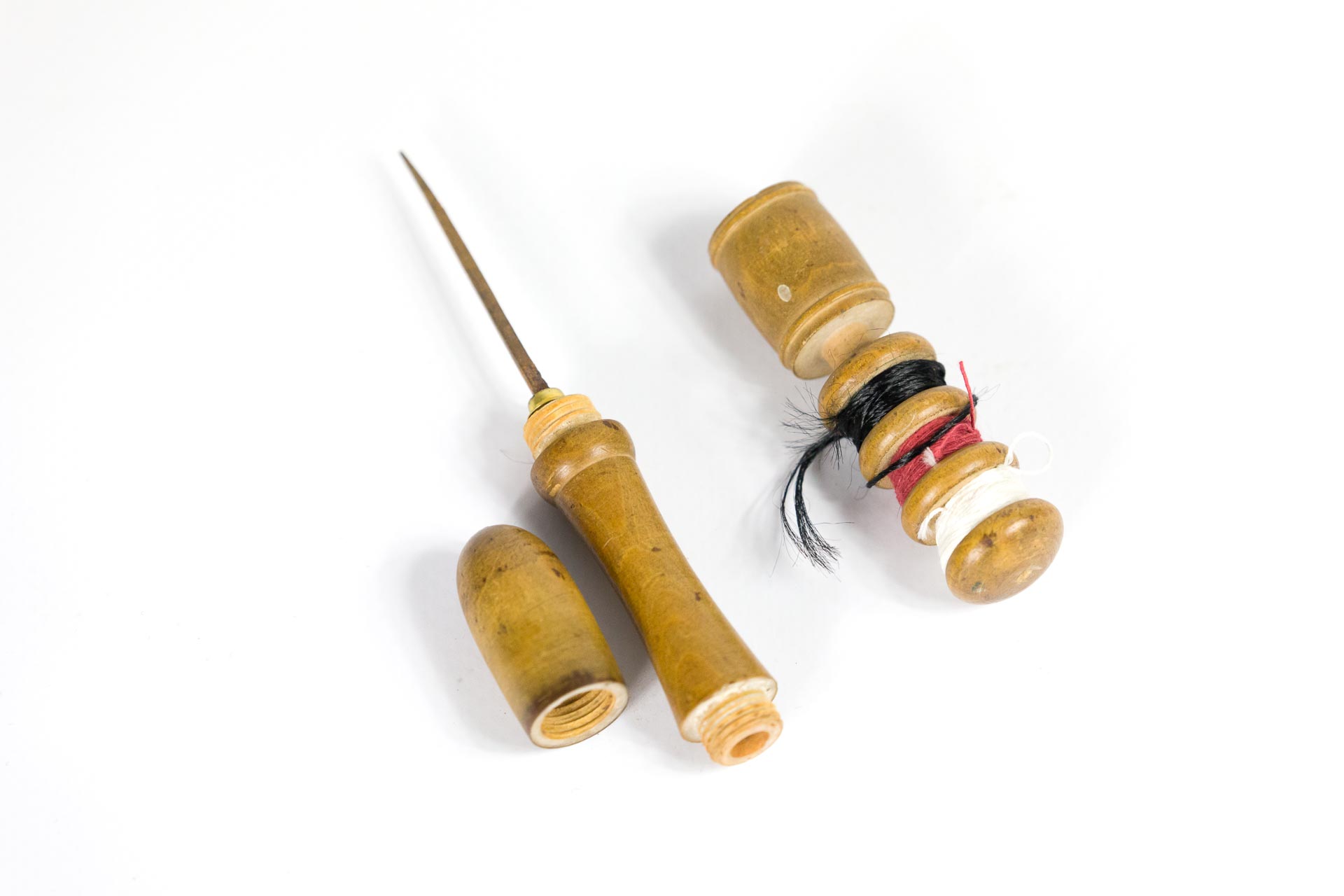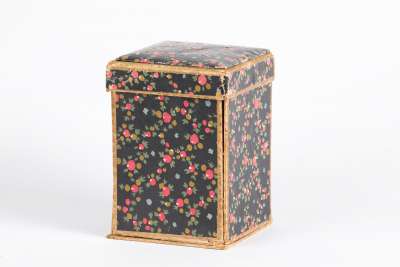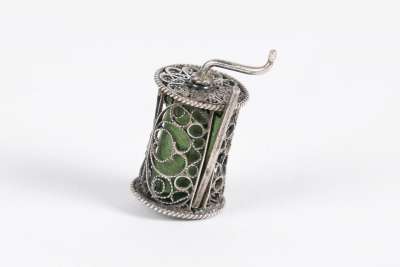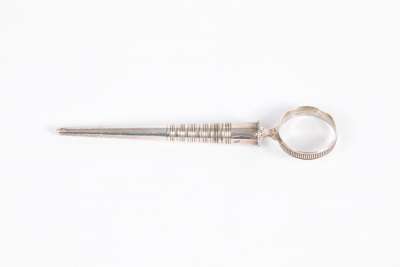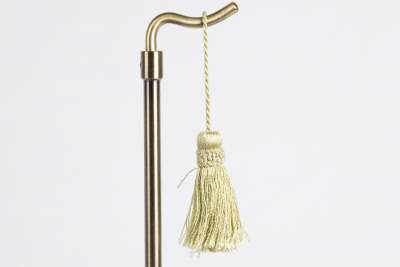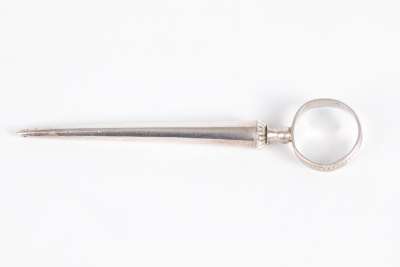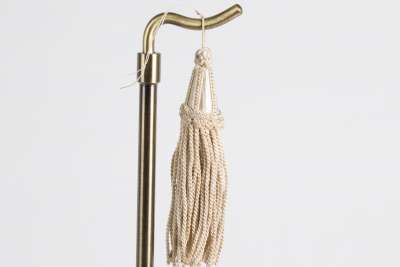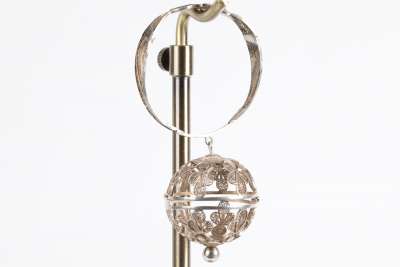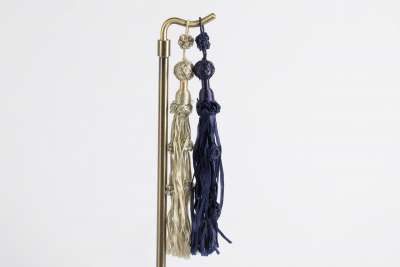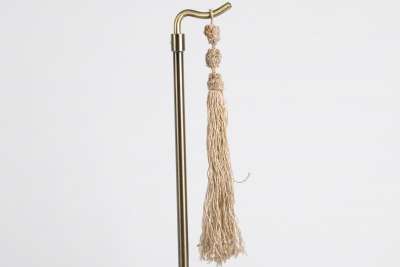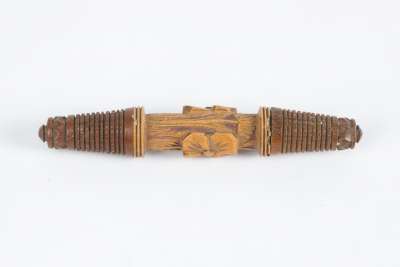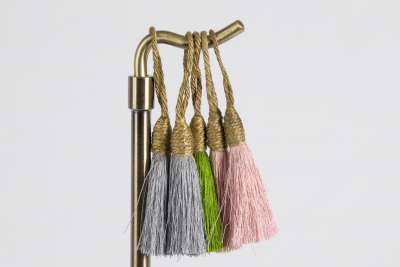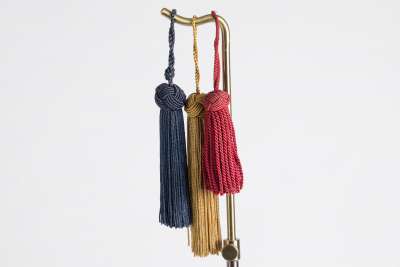This antique piece is a French soldiers' sewing kit, dating back to the period between 1910 and 1919. It is crafted from turned wood, showcasing the practical design tailored for military use during World War 1. The sewing kit is compact, with a cylindrical form, featuring a bodkin at one end for piercing tough fabrics, and a compartment at the other end for storing needles. Additionally, it includes bobbins for thread, making it a functional tool for soldiers needing to mend their uniforms in the field or trenches.
Condition Report
The soldiers' sewing kit is in good condition, displaying wear consistent with its age and historical use. The wooden exterior has maintained its structural integrity over the years, although some minor surface scratches and patina are evident, characteristic of an item that has been used in practical field conditions. The internal components, including the needle compartment and thread bobbins, remain intact and functional. Such signs of wear add to its authenticity and historical value, attesting to its storied past in the hands of soldiers during World War 1.
Dimensions
Weight: 20gm, Length: 13cm, Width: 1.5cm, Height: 1.4cm.
A Soldier's Essential Tool
The primary function of this sewing kit was to serve as an essential tool for soldiers tasked with self-maintenance of their uniforms during wartime. Its design reflects the necessity for portability and efficiency, enabling soldiers to make quick repairs to their clothing, which was crucial in maintaining their gear in harsh conditions. The inclusion of a bodkin and storage for needles and thread highlights the thoughtful design considerations tailored to the needs of soldiers in the field.
Functional Military Design
This sewing kit is a fine example of early 20th-century military design, where practicality and durability were paramount. The turned wooden construction is both lightweight and robust, ideal for the rigours of military life. The design is utilitarian, with each component serving a distinct purpose, reflecting the straightforward and efficient style of military tools from this era. The cylindrical shape is not only ergonomic but also space-saving, allowing soldiers to carry it alongside other essential gear easily.
The Craft of Turned Wood
The craftsmanship of this sewing kit involves the careful turning of wood, a process that requires skill and precision. Turned wood items, especially those crafted for military use, demanded durability and functionality. The smooth finish and precise dimensions indicate a high level of craftsmanship typical of French wooden objects from this period. The use of wood not only provides a lightweight alternative to metal but also offers a certain warmth and tactile quality, suitable for a personal item like a sewing kit.
Anonymous French Craftsmanship
While the maker of this particular sewing kit remains unknown, it is a testament to the anonymous artisans who supplied soldiers with essential tools during World War 1. French craftsmanship from this era was renowned for its quality and attention to detail, even in utilitarian objects such as this. These kits were likely produced in small workshops, contributing to the war effort by ensuring soldiers were equipped with the necessary tools to maintain their uniforms and gear.
Collected by Military History Enthusiasts
This type of antique holds significant interest for collectors of military memorabilia, particularly those with a focus on World War 1 artifacts. The sewing kit offers a tangible connection to the everyday life of soldiers during the war, providing insight into the resourcefulness and self-sufficiency required in the field. Collectors value such items for their historical significance, as they represent the ingenuity of wartime design and the personal experiences of soldiers who relied on them. The provenance and condition of this piece make it a noteworthy addition to any collection of military history.

